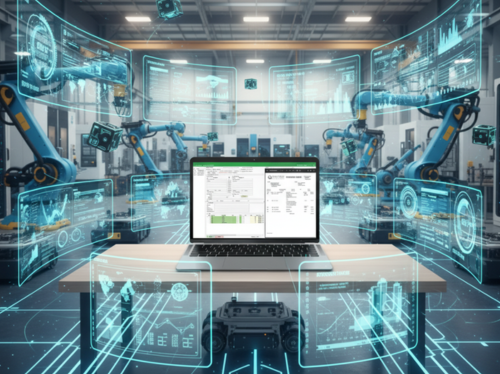Spring Energy Outlook : Time to power down (a little)

Contributing Editor Steed Webzell checks out the energy efficiency credentials of three popular machine tool types to see how shrewd purchasing decisions can pay real dividends
Machine tools are the centrepiece of the component manufacturing industry, providing the heartbeat of machine shops up and down the country. They often need to run all day, 24 hours in some instances, as uptime is the only way to get invoices out the door. The trade-off is energy consumption, an indirect cost with a direct impact on bottom-line profitability. And yet, with a little research, it is possible to ensure that future investments both minimise this cost and contribute positively to environmental sustainability.
Take laser cutters, for example. Laser cutter manufacturer Bystronic says that fibre lasers require far less energy than CO2s lasers as a result of up to five times greater electrical efficiency.
Consider a like-for-like comparison between a 6kW CO2 laser and a 6kW fibre laser. The average power consumption of the Bystronic CO2 laser is 65kW, while the Bystronic fibre laser only consumes 22kW. With a target working time of 3600 hours a year and 65% actual cutting (laser on) engagement, the CO2 laser uses 152,100 kWh per annum (3600 x 0.65 x 65). In contrast, the fibre laser uses just 51,480 kWh (3600 x 0.65 x 22), leading to power savings of 100,620 kWh (152,100 – 51,480).
According to the Energy Saving Trust, the national average price of electricity (as of October 2022) is £0.34 pence per kWh. Based on this figure, replacing the 6kW CO2 laser with the 6kW fibre laser will save £34,211 (100,620 x 0.34). Over a five-year period, this saving escalates to £171,055.
Such are the savings available that it is even possible to replace two CO2 laser cutters with a single fibre laser and still make considerable gains.
Consider replacing 6kW and 4.4kW CO2 laser cutters with a single 10kW fibre laser, assuming the same target working time of 3600 hours a year and 65% cutting (laser on) engagement. As already established, the 6kW CO2 laser consumes 152,100 kWh a year. The 4.4kW CO2 laser (with its average power consumption of 51kW), uses 119,340 kWh (3600 x 0.65 x 51) per annum. Conversely, the 10kW fibre laser cutter with its average power consumption of 25kW, uses just 58,500 kWh (3600 x 0.65 x 25). The resulting savings of 212,940 kWh per year (at £0.34 electricity price) equate to £72,400, climbing to £362,000 over five years.
Among the Bystronic customers to recently take advantage is Walsall-based Metal Processes (1959) Ltd, which swapped two 6kW CO2 laser cutting machines for Bystronic 3kW and 10kW fibre lasers, achieving a huge 41.75% saving in energy usage after a six-month review.
Of course, other machine tool types can also offer notable savings in this area. Take the range of turning machines produced by Tornos, for example. The company’s machine tools offer a number of features that help to cut energy use as a matter of course. For instance, when a Tornos machine has finished its production run it automatically switches some of its principal electricity consumers (pumps, oil mist extractor, door locks) to standby mode, based on maximum power consumed (%).
Users also benefit from automatic programming of the machine’s pre-heat cycle, so the operator can start production quicker. Another option is to program a total shutdown of the machine at the end of production. The electricity consumption is therefore zero while the machine is in standby.
Further energy-saving techniques deployed by Tornos include coolant pump actuation using a frequency converter (optimising the pump motor’s rotational speed); reducing moving masses by up to 40%; and the use of more efficient synchronous motors while recovering and reusing up to 70% of the energy returned by the braking system in all drives.
Regarding machining centres, Brother says that its 30-taper Speedio R450Xdi and R650Xd1 pallet-changing compact machining centres, available in the UK from Whitehouse Machine Tools, not only offer 30% faster cycle times than a 40-taper machine, they also consume 80% less energy consumption.
In addition to a low-inertia spindle and highly efficient spindle motor, R-series machines utilise a power regeneration system that reuses the energy generated when the servomotor decelerates. Further features include an energy-saving pump, LED work light and a variety of energy-saving NC functions: automatic coolant off, automatic work light off, standby mode and automatic power off.
So, when the time arrives to make another machine tool investment, why not push energy efficiency higher up the list of priorities. After all, it will benefit both bottom-line profitability and the planet. A true win-win situation.









